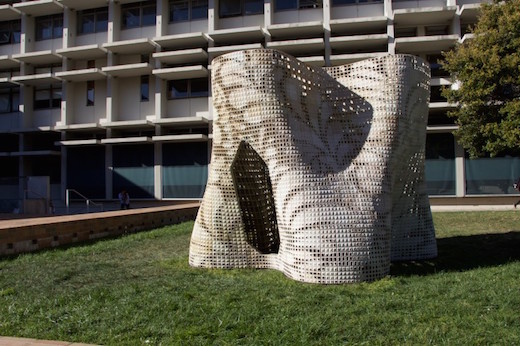
The 3D printing of homes and other buildings definitely has a place in the future of architecture as soon as the technology is scaled up to be able to produce large structures. We might be one step closer to that with the powder-based cement method of 3D printing, which was developed by researchers at UC Berkeley, headed by Associate Professor of Architecture Ronald Rael.
The 3D printing method developed by Rael and his team is different to others we have seen lately. Instead of extruding wet cement like other printers, it actually prints a thin layer of a specially formulated dry cement powder onto which water is then sprayed in order to harden it. This method might just be more promising than using 3D printers to print sheets of wet cement, as most other researchers in this field are approaching it.

To print with, Rael’s team have formulated an iron oxide-free Portland cement polymer as well as a system of 11 powder-based 3D printers. With these they are able to create a more complex and precisely finished structure than if they were using the extrusion method. Their finished structure is also lighter and produces less waste.
To showcase their method, the team has printed the so-called Bloom pavilion, which is 9 ft (2.7 m) high, and has a 12 ft by 12 ft (3.6 x 3.6 m) footprint. They built it using 840 customized blocks connected with steel. Since the cement powder they used does not contain iron oxide the pavilion is white. Each brick that they used is also unique, which allowed the team to create the complicated pattern of the structure, which is very decorative and allows light to pass through it.

According to Rael, 30 printed building blocks per day could be produced by 11 printers meaning a structure such as the Bloom pavilion could be constructed in about 28 days. The actual building of the Bloom pavilion took over a year though, but that includes designing and building the printers, and figuring out the process of printing.

The Bloom pavilion will be displayed in various locations worldwide for the next year or so, starting in Thailand, at the headquarters of the Siam Cement Group which provided financial backing for the research.
Related Articles on JetsonGreen.com:
Printing Houses From Mud
3D Printed Homes Made in China
Printed Castle Heralds the Future

Leave a Reply
You must be logged in to post a comment.